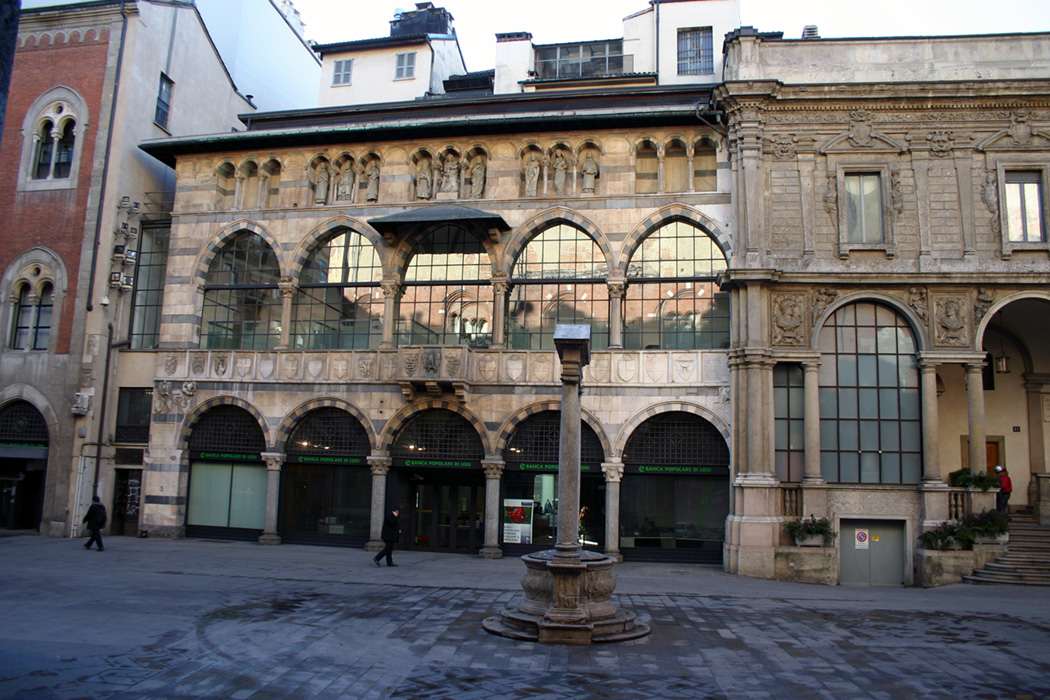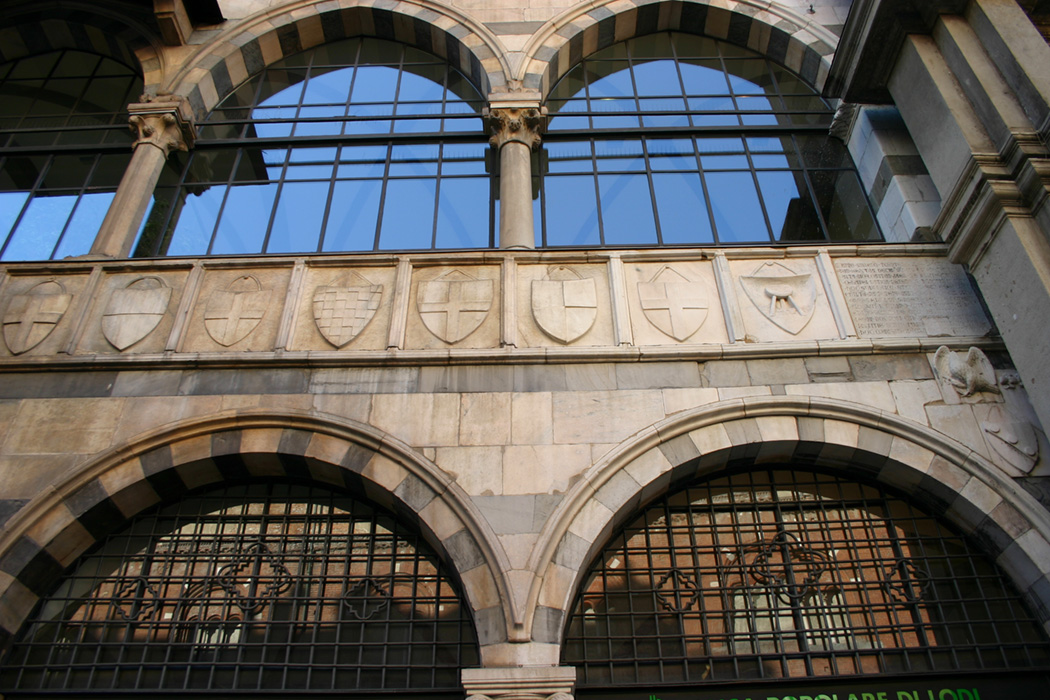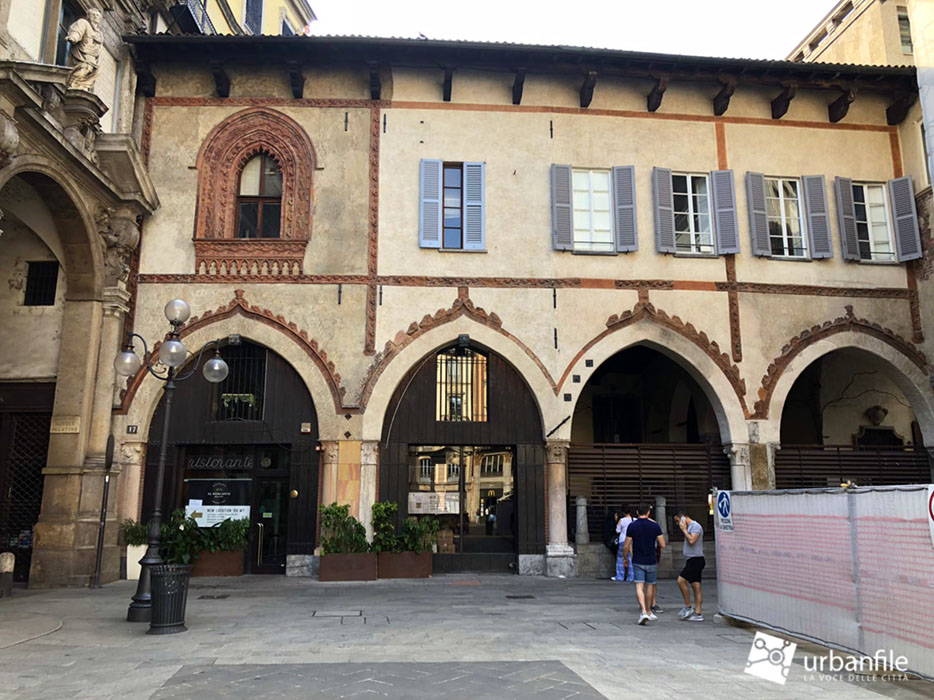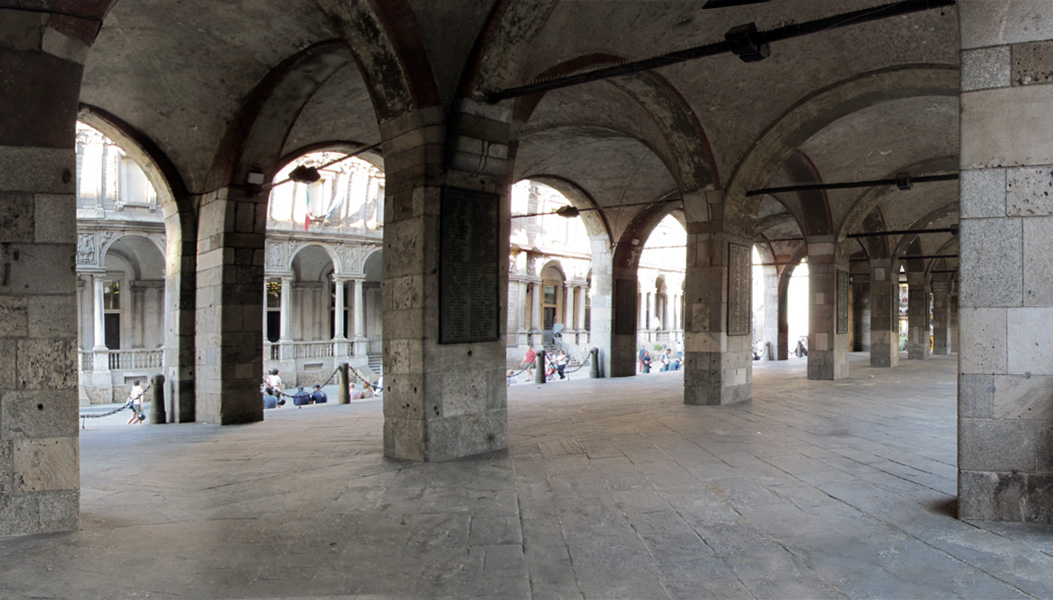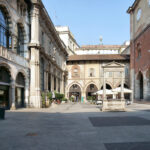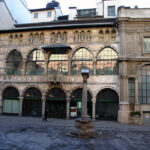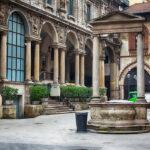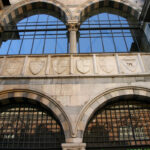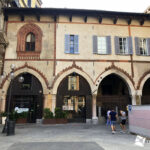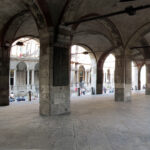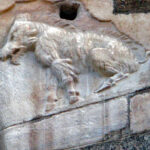Milan – Piazza Mercanti
Piazza Mercanti is an extraordinary square located a short distance from the Duomo. In the Middle Ages, it was the commercial and administrative center of Milan, but currently, it is simply a charming medieval corner where you can see interesting and original buildings.
The square was created from the middle of the thirteenth century with a rectangular plan, originally wider than it is today. Six entrances opened onto it, referring to the six city districts. The adjacent streets took the names of the different trades carried out: Armorers, Swordsmiths, Hatters, Goldsmiths, Spur-makers, and Drapers.
In the center, the “Palazzo della Ragione” was built, also known as Broletto Nuovo, at the request of the podestà Oldrado da Tresseno. It was completed in 1233 and used for judicial activities, giving the name Piazza del Broletto to the square itself in medieval times. With this building, consisting of a hall over a loggia, a typology was inaugurated that was later taken up in various Lombard cities, above all Monza with its Arengario, whose forms refer to those of the original Palazzo della Ragione, at least in its form prior to the 18th century when it underwent significant transformation with elevation. The elevation dates to 1773, when the communal hall with loggia was transformed, under Maria Teresa of Austria, into the notarial archive. The work was carried out by the senior architect Francesco Croce (who, among other things, designed the highest spire of the Duomo in Milan). Croce created the current attic floor with circular windows and the vaulting of the porch, which was previously covered by a framework of beams and planks. The palace dominates the northern side of the current square; originally, however, it was at the center of a rectangular porticoed square, isolated from the other buildings.
On the western side is the “Palazzo dei Notai” or “Casa dei Panigarola” (from the fifteenth century, in Gothic forms) and, on the corner of the southern side of the square, the “Palazzo delle Scuole Palatine,” a Baroque building from 1645 by Carlo Buzzi, which was built on the site of the pre-existing “Scuole del Broletto” from the fourteenth century.
On the southern side, adjacent to the Palatine Schools, is the “Loggia degli Osii”, erected in 1316 by Scoto da San Gimignano at the behest of Matteo I Visconti, modified in the seventeenth and eighteenth centuries, and restored to its original form in 1904. It houses the statues of the city’s patrons and, at the center of the upper floor, the parlèra from which edicts were proclaimed.
In the center of the square is a sixteenth-century well, surmounted by two columns with a entablature from the eighteenth century.
Reused as an impost of one of the arches of the Broletto, you can see a stone with a Roman relief representing a wild boar, traditionally interpreted as the depiction of the “Semilanuta” sow, the city’s first symbol. Legend has it that the Celt Belloveso founded the city of Milan in the exact spot where he would find the magical animal, shown to him in a dream by the goddess Belisama. An ingenuous interpretation of the etymology of Mediolanum would derive this name from the qualification “Semilanuta” of the animal.


